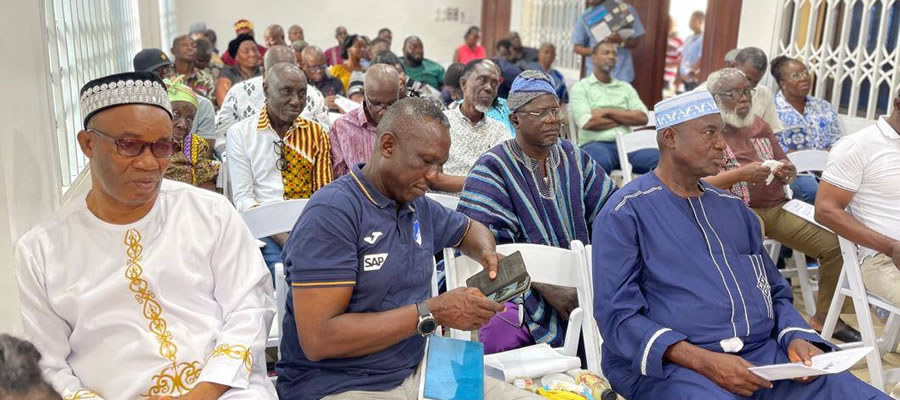

ICT
Introduction
Access to information and communication technology is essential in increasing people’s knowledge and awareness of what is taking place around them even at the global level. The world is now linked together with advanced communication technology and access to information is through the computer, mobile phone and internet facilities which are fast becoming essential for living a meaningful life. Globally, education or various systems of learning are now based on information and technology.
Information and Communication Technologies (ICT) have become important tools in today’s knowledge-based information society and economy. This role of ICT in an emerging economy such as Ghana’s has been widely recognized at various levels. The recognition is reflected in actions such as the development and deployment of a national ICT infrastructure, institutional and regulatory framework for managing the sector, promoting the use of ICT in all sectors of the economy, implementing e-governance in government institutions and the construction of a National Data Centre as well as Regional Innovation Centres.
The 2010 Population and Housing Census therefore collected information on various aspects of ICT facility, access, ownership and use in Ghana. This chapter is on these ICT areas in the Adentan Municipality.
Ownership of Mobile Phones and Use of Internet
Cellular phone is the most widely used telecommunication tool in the Municipality. Table 5.1 shows that 79.0 percent of the population aged 12 years and older own mobile phones in the Municipality. More males (83.7%) than females (74.3%) aged 12 years and older owned mobile phones.
Housing
Introduction
Concerns for human wellbeing conditions associated with housing led to the introduction of questions on housing into the 2000 round of Population and Housing Census. The 2010 Population and Housing Census is thus the second time questions on housing were asked. A number of housing characteristics and associated conditions such as overcrowding, supply of basic services such as drinking water and sanitation facilities (toilet and bathroom) are important areas that are required for monitoring progress in human development.
This chapter presents the findings on housing and housing conditions that pertained in the Adentan Municipality in 2010. It examines the housing stock, type of dwelling, room occupancy, holding and tenancy, lighting and cooking facilities, bathing and toilet facilities, waste disposal and source of water for domestic use, among others.
Housing stock
The total stock of houses in the Adentan Municipality recorded in the 2010 Population and Housing Census was 13,669 (Table 8.1.). The urban areas have a higher proportion of the houses (59.9%) than the rural areas (40.1%). Again, the urban areas recorded a higher proportion of households (63.4%) than the rural areas (36.6%).The average number of households per house was (1.5) for the Municipality, with the urban areas having a slightly higher rate of (1.6) than the rural areas (1.4). Also the average household size was 3.7 for the Municipality, with an urban average of 3.8 and a slightly lower rural average of 3.7. Population per house recorded for the Municipality was 5.6, with a higher urban rate of 6.0 and a lower rural proportion of 5.0.
Type of Dwelling, Holding and Tenancy Arrangements
Table 8.2 indicates that 31.1 of households in the Municipality occupy Separate houses and 30.7 percent of households occupy compound houses. Improvised homes (13.9%) and uncompleted buildings (10.9%) provide dwellings for about a quarter of households in the Municipality. Semi-detached houses (7.9) and flat/apartment (3.6) form a little over a tenth of all the dwelling units. As shown in Table 8.2, the percentage of male-headed households occupying separate housing units is higher (31.9%) than that of female-headed households (29.15%).
The proportion of male-headed households that occupy compound houses is lower (30.0%) than that of female-headed households (32.5%). A slightly lower proportion of female-headed households (13.5%) occupy improvised homes compared to that of the male-headed households (14.9%) in the Municipality while male-headed households recorded had higher occupancy rate of uncompleted buildings (10.9%) compared to female-headed households (8.4%).
Table 8.2 further shows that in the rural areas of the Municipality, the percentage of houses that are separate houses (33.4%) is higher than that in urban areas (29.7%). The proportion of households in urban areas (33.3%) that are compound houses is higher than in rural areas (26.3%). Improvised homes and uncompleted buildings are occupied by higher proportions of the rural households (17.5% and 11.8% respectively) than urban households (11.4% and 9.5% respectively).
Table 8.3 indicates that private individuals that are not household members own 44.9 percent of all the dwelling units in the Municipality. The second commonest type of ownership is household members (38.9%) while ownership by relatives who are not household members (9.6%) comes third. Other types of ownership constitute small percentages. Higher proportions of male-headed households and those in urban areas occupy dwellings that are owned by private individuals. Also more Private individual household members recorded higher ownership of dwelling units in the urban areas (46.1%) than their female counterparts in the rural areas (42.7%).
Construction materials
The main material for outer wall of dwellings in the Municipality is cement and concrete (82.8%). The percentage of dwellings with such walls is 85.2 percent in urban areas compared with 78.8 percent in rural areas (Table 8.4). There is also the use of wood (13.9%) for outer walls; however it is used by a higher percentage of households in the rural areas (17.7%) than in urban areas (12.0%).
The main material for floor in the floor of dwelling units in Municipality is cement and concrete (61.6%). The percentage of dwellings with such floors exceeds 60 percent in both urban and rural areas (Table 8.5). There is also the use of ceramic/porcelain/granite/marble tiles for floors by a tenth (10.1%) of households in both urban and rural areas. Wood is used by a higher percentage of dwellings in rural areas (13.5%) than urban areas (7.5%). However earth/mud is used by a higher percentage in the urban areas (11.3%) than in the rural areas (3.7%).
Metal sheet (63.6%) is the main material used for roofing in the Municipality (Table 8.6). The percentage of dwellings with such roofs exceeds 60 percent in both urban and rural areas. The use of asbestos is reported by one-fifth (20.0%) of households (21.4% in the urban areas and 17.8% in rural areas). Use of roofing tile is more in rural areas (12.2%) than in urban areas (8.1%).
Room occupancy
Table 8.7 shows the distribution of rooms in occupied housing units in the Municipality. Nearly 60 percent (58.4%) and one-fifth (20.9%) of all households occupy single rooms and two rooms respectively in the Municipality. On the whole, single rooms constitute the highest percentage (89.6%) of all the types of rooms occupied in housing units by single households. The proportion of households that occupy single rooms declines with increase in household size. Households with 10 members or more recorded the least occupancy in single room (7.0%) but recorded (1.1%) occupancy of 9 rooms or more dwelling units.
Access to Utilities and Household Facilities
Table 8.8 shows the main sources of lighting for dwelling units in the Municipality. Electricity (mains) is the major source of lighting for 71.7 percent of households, followed by flash light/touch (12.1%), kerosene lamp (9.3%) and candle (4.8%). A higher percentage of rural households use flash light/touch (15.0%) than those in urban areas (10.4%). The percentage of households depending on kerosene lamps is also higher in the rural areas (11.0%) than urban areas (8.2%).
Table 8.9 shows that the main sources of cooking fuel for households in the Municipality are Gas (47.2%) and Charcoal (40.1%). Wood is also used as source of fuel for 5.0 percent of households in the Municipality. The proportions of households using charcoal and wood are higher in rural areas (41.7% and 6.3% respectively) than in urban areas (39.2% and 4.3% respectively).
Date Created : 11/17/2017 6:10:54 AM












 facebook
facebook
 twitter
twitter
 Youtube
Youtube
 +233 593 831 280
+233 593 831 280 0800 430 430
0800 430 430 GPS: GE-231-4383
GPS: GE-231-4383 info@ghanadistricts.com
info@ghanadistricts.com Box GP1044, Accra, Ghana
Box GP1044, Accra, Ghana